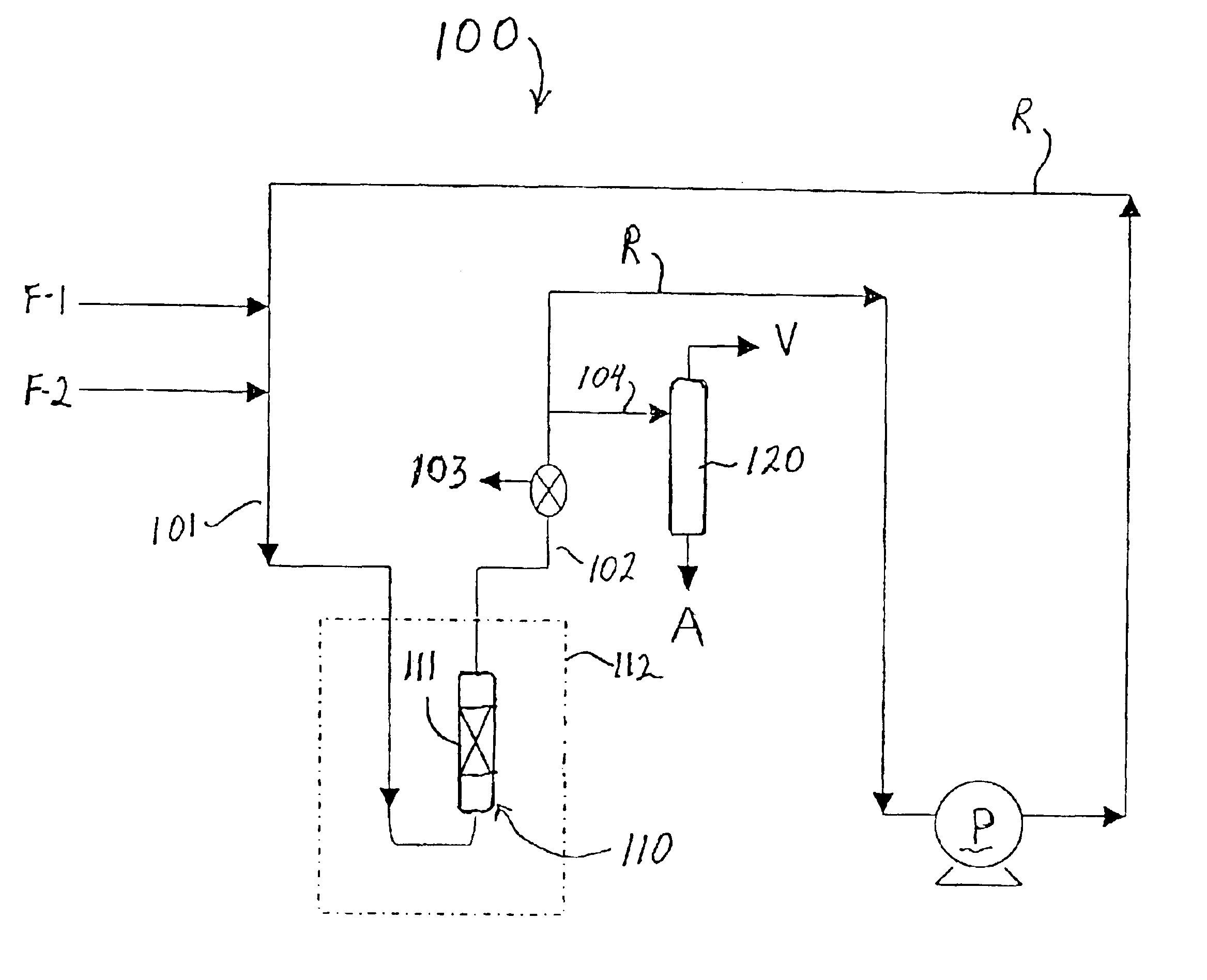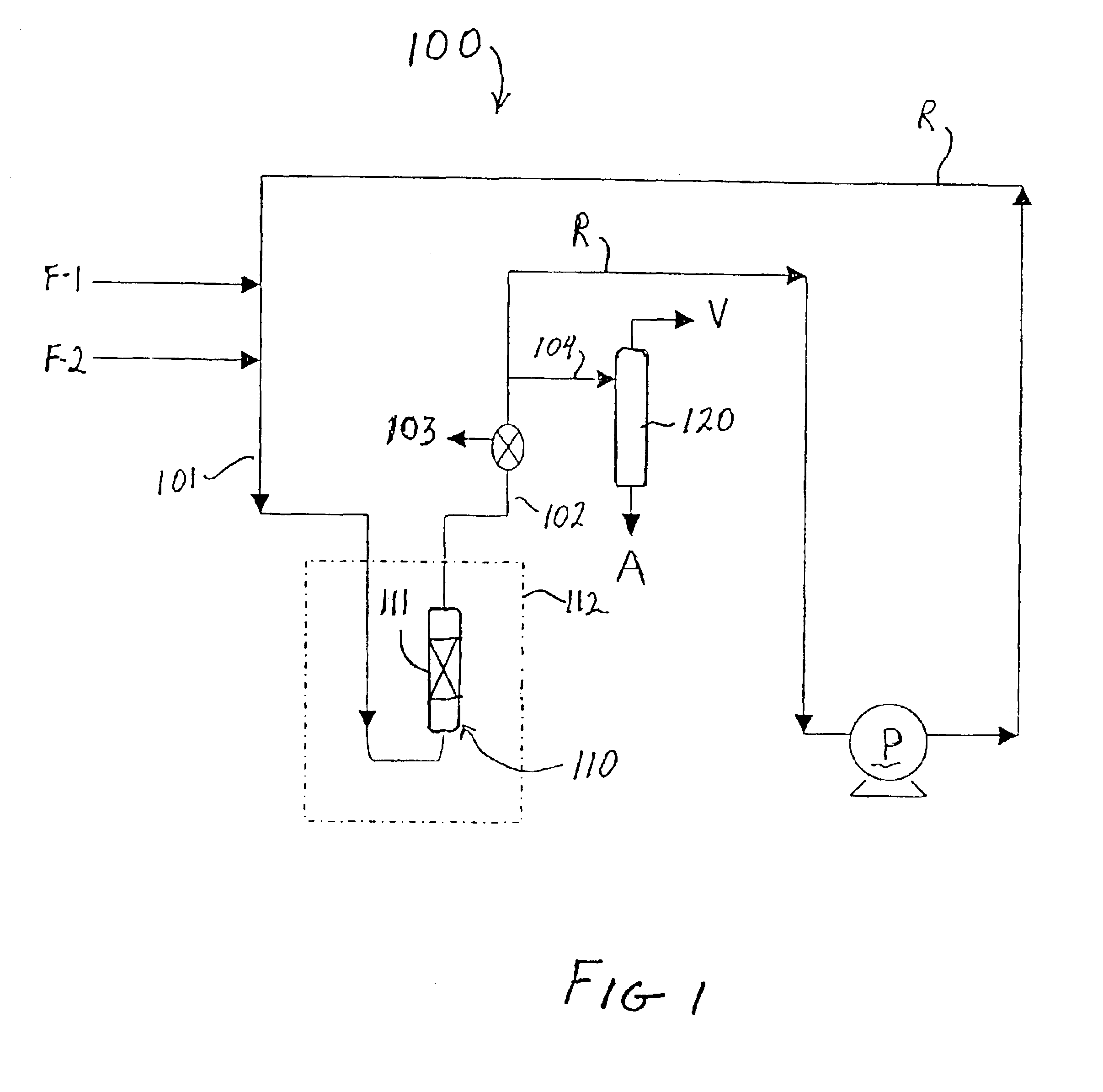Alkylation process
a technology of alkylation and process, applied in chemical/physical processes, catalyst activation/preparation, hydrocarbon preparation catalysts, etc., can solve the problems of repeated re-generation, severe environmental hazards, and high corrosion of both acids, so as to achieve the effect of reducing the number of catalysts
- Summary
- Abstract
- Description
- Claims
- Application Information
AI Technical Summary
Problems solved by technology
Method used
Image
Examples
example 1
The catalyst used in this Example included zeolite beta produced in accordance with the method set forth in U.S. patent application Ser. No. 09 / 981,926 and had an estimated AAI value of 1.2. The zeolite was combined with alumina to form a catalyst of {fraction (1 / 16)}″ extrudates containing 80 wt % zeolite. The catalyst was then sieved to a particle size of −18 to +25 mesh and ion exchanged at room temperature with tetraamine platinum (II) hydroxide hydrate (59% Pt) to produce a catalyst containing 0.5 wt % Pt on zeolite. The catalyst was pretreated by heating from room temperature to 350° C. at a rate of 0.5° C. / min in flowing air (75 ml / min / gram), holding under those conditions for 2 hours, then cooling down to room temperature, then switching to hydrogen flow of 20 ml / min / gram while heating to 275° C. at the rate of 1° C. / min, holding for 2 hours and then allowing the catalyst to cool to room temperature. The total catalyst charge to the reactor (i.e., zeolite plus binder, Pt exc...
example 2
The catalyst used in this Example also included zeolite beta produced in accordance with the method set forth in U.S. patent application Ser. No. 09 / 981,926 and had an estimated AAI value of 1.2. The zeolite was combined with alumina to form a catalyst of {fraction (1 / 16)}″ extrudates containing 80 wt % zeolite. The catalyst pretreatment conditions and the alkylation reaction equipment set-up and conditions were the same as in Example 1. The total catalyst charge to the reactor (i.e., zeolite plus binder, Pt exchanged and pretreated.) was 4.0 parts, and 0.27 parts / min of a feed containing isobutane and cis-2-butene at an isobutane / cis-2-butene ratio of 15.9 was pumped in from the start of the test run. Samples were taken from sample port 103 with a high pressure syringe every 45 minutes for GC analysis until a drop in TMP isomers was observed. The results of the alkylation test are set forth below in Table 1.
The Comparative Examples set forth below employ conventional catalysts and ...
PUM
| Property | Measurement | Unit |
|---|---|---|
| pressure | aaaaa | aaaaa |
| temperature | aaaaa | aaaaa |
| pressure | aaaaa | aaaaa |
Abstract
Description
Claims
Application Information
 Login to View More
Login to View More - R&D
- Intellectual Property
- Life Sciences
- Materials
- Tech Scout
- Unparalleled Data Quality
- Higher Quality Content
- 60% Fewer Hallucinations
Browse by: Latest US Patents, China's latest patents, Technical Efficacy Thesaurus, Application Domain, Technology Topic, Popular Technical Reports.
© 2025 PatSnap. All rights reserved.Legal|Privacy policy|Modern Slavery Act Transparency Statement|Sitemap|About US| Contact US: help@patsnap.com


